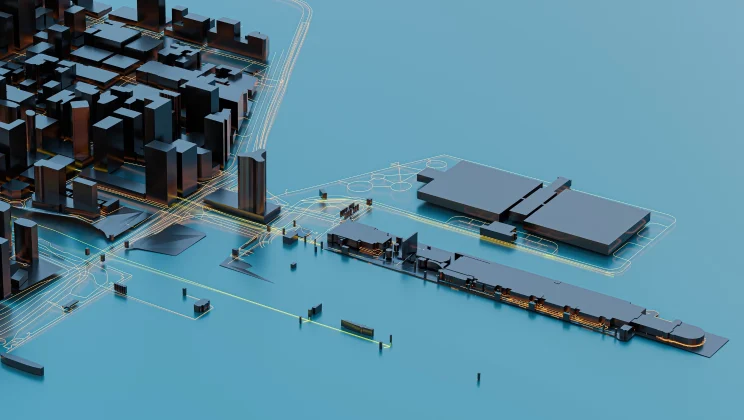What helps people overcome obstacles? Crushing obstacles is hard work. It requires a lot of planning, time management, inner fire, and a thorough understanding of your goals.
Without your objective in mind, it’s difficult to dig deep and push forward. Vision makes all the difference when you have a clear goal and know exactly how to accomplish it. Discipline, combined with a managerial approach, can help you overcome obstacles during these uncertain times.
Joe and Lin, two friends from childhood, own a mid-sized business in New York. While they do not specialize in IT, they are very well-versed in the field.
We connected when the world was already on lockdown. It was fun to joke around with them, saying things like: “May you live in interesting times.”
That phrase made me curious.
Lin later told me it translated to something like, “It’s better to be a dog in a peaceful time than be a man in a chaotic period.” This saying speaks volumes, and it fully describes why we came to the idea of creating software products using MVP Lite.
MVP Lite is an agile-like approach we started to use at MobiDev during these “interesting times.” This approach combines MVP, POC, Prototyping, and several other technical and managerial solutions to reduce budget costs and decrease time to market.
John and Lin were able to find a way to launch a software product. But that doesn’t mean it was a flawless process. Early on, two key issues were identified.
They didn’t want to put all of their eggs in one basket, which in simple terms, means they wanted to reduce their exposure to risk. IT moves fast, and with startups, anything can change at any time.
We decided to focus on identifying user needs, the technology’s possibilities and use cases, and our business goals. Lin and John already knew their market very well, so it was easy to identify their key value propositions. Working with a restricted budget and timeline, we concentrated on creating a list of meaningful features and adjusted the tech stack.
This project was unique, as both the product owners and the engineering team were influencing business goals, user scenarios, and technology choices simultaneously. Based on the resulting technology choices, some of the business goals were simplified to focus on the core mission.
Our results are as follows:
| Pre-Covid custom approach | MVP Lite approach |
| Timeline: 5 months
Budget: $55 000 Technical Solutions: custom design, mobile development and back-end from scratch |
Timeline: 2.5 months
Budget: $23 000 Technical Solutions: material design component, Flutter for cross-platform development, CMS for the back-end |
Based on our business needs, we created a cross-platform mobile application for a clothing retail company. We decided to use a template design and ready-made solutions to speed up development, reducing our projected timeline by half and our costs by 58%.
The Step-By-Step Guide to Implement MVP Lite Approach
Following these steps will help you to identify and prioritize features. It will show you how to confidently release a software product to the market using the MVP Lite approach.
Step 1: Identify Demand in the Market
It all starts with simple market research. Identify if there is a need for your software on the market. Needs can be organizational or based on customer feedback that addresses a current gap.
One way to determine demand is to analyze what competitors are doing and establish how to differentiate your product. You can do this by:
- Researching the market and creating a product proposal
- Identifying key values
- Creating a high-level feature set and use cases
The article ”Business Analysis in Software Development” explores the requirement analysis approach in more detail.
Step 2: Identify Constraints
Constraint may sound like a negative word, but in this context, it’s not. It’s actually a good thing.
Now you’re wondering: how can constraints be good?
In product development, constraints help creators outperform the competition if adequate planning is implemented. Remember, each constraint brings an opportunity to innovate, which leads to smarter development and a more functional product.
These are all win-wins in product development. You can do this by:
- Determining key metrics
- Choosing whether to ignore or include metrics
- Distinguishing project constraints
Step 3: Think Big
What’s next after gathering the essential information about market demand and constraints? It’s time to think big. We recommend following these steps:
- Formalize ideas into a high-level feature set and use cases
- Define your scope
- Define functional and non-functional requirements and features
- Wireframe and prototype your idea
The article “UX/UI Design Stages Deliverables Checklist” explores the UX/UI design deliverables product owners should focus on completing.
Step 4: Analyse a Tech Stack
A tech stack is a set of tools and technologies that you can use to construct and deploy your software product. Tech stacks are combinations of third-party solutions, libraries, software engineering tools, frameworks, and programming languages.
The main benefit of using stacks is the ability to use ready-made components that are faster to implement than custom software solutions. Custom solutions are great, but using them leads to increases in development time and budget.
MVP Lite focuses more on ready-made components to ensure a faster product launch with lower budgets. This approach can help you:
- Define alternative design solutions for each feature
- Define alternative design solutions for “packages”
- Gather all technical benefits and risks per software solution
Step 5: Evaluate a Tech Solution
The next step is to evaluate your solution. You should compare the tech solution’s business value with its development efforts and technical constraints.
By evaluating your tech solution, you can restrict features by scope or adjust them to fit your parameters. Keep in mind that your development team will also influence the solution scope because your teams provide lots of technical know-how and experience to your projects. You should consult with them as they are subject matter experts, and they can help you evaluate your tech solutions efficiently.
Let your development team provide suggestions to improve your product. It’s okay if they make suggestions that extend beyond your product requirements. By adjusting the scope of the project, you will create a better product.
Every employee working on your project can provide valuable insights that you might otherwise gloss over. The best way to ensure success is to:
- Choose solutions that are suitable
- Estimate each solution’s dependency on other services
- Identify technical risks
- Highlight limitations of relevant ready-made or template solutions
Step 6: Converge and Plan
By this point, everything went pretty well. What’s left to do? It’s time to converge and plan.
Make sure your product’s scope and technical solutions match the initial project constraints and key metrics. Even if there is still some uncertainty left in the planning process, or the overall process, it’s still possible to develop a comprehensive roadmap based on your budgetary constraints and timeline to delivery.
Here’s what you can do:
- Develop a roadmap
- Create a risk register
- Finalize the product’s scope and feature list
This approach is valuable when you need to release or create a software product that can be used and shown to investors within limited timeframes and budgets. It can help attract initial product users, display metrics (active, inactive, and traction), stake out a market niche, and obtain valuable feedback from the investors.
MVP Lite approach was developed by MobiDev Team.
Banner picture – Clark Van Der Beken.






